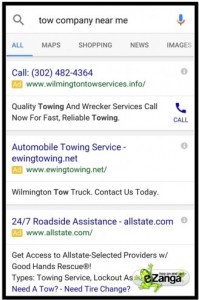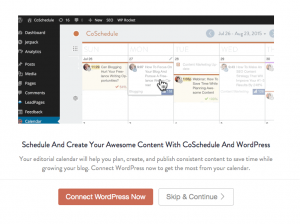Successful personal branding and job search requires both social media and physical networking. This blog post offers strategic suggestions for the convergence or grounding of these networking efforts when using Twitter.
Sometimes I worry about my marketing students. 
Yes, many are strategically active on social media, and continue to learn.
However, my concerns are more about the incompleteness of their Twitter strategies. In short, I fear that they are not doing enough to ground or optimize their social media networking efforts with the real world.
“Social media networking should complement rather than replace efforts for physical networking.”
I have previously referred to this grounding of social media networking with physical networking as networking convergence. In my more recent post, LinkedIn to Real Life, I wrote about the much needed physical grounding of LinkedIn.
This blog post is about using Twitter for a more effective and real-world grounded personal brand, job search, and career.
Twitter is for Learning.
“Networking on Twitter is a lot like trying to meet others on an escalator in the library. Conversations are short and fleeting, but while there you may as well do some career focused reading.”
Adding Twitter to your social media mixology provides numerous learning benefits for a personal brand, job search, and career advancement. These benefits include:
- A personal learning network (PLN).
You can learn a lot by following the thought leaders in your current or future career focus and industry. These like-minded connections can provide you a daily and hand-picked collection of news, inspiration, entertainment, and education supporting to your personal and professional development.
- Learn more about your connections.
As you will quickly discover, Twitter can offer a fast, real-time flow of valuable shared content, but leave little time for conversations. Nonetheless, you can learn a lot about current and potential social connections by reading their Twitter profiles and browsing their social sharing behavior.
- Others can learn more about you.
Additionally, Twitter offers a career confirmation benefit for personal branding, job search, and career. When others (especially: bosses, hiring decision makers, and social recruiters) visit your Twitter profile and review your social sharing activity, they hopefully receive confirmation of your personal brand identity (or how you want others to see you and your qualifications).
“While LinkedIn connections are more easily thought of as those you already know, Twitter connections are best thought of as those you want to learn from.”
Yet, with a bit of effort Twitter can be optimized to become a valuable resource of those you already know and those you want to know better.
Real-World Connection Strategies When Using Twitter.
Our first thoughts to guide our connections on Twitter are usually focused on the like-minded, or those with a similar career focus or interests.
However, if you only focus on following those with like-minds and interests, you may miss some other important connections that could help you in your efforts for job search or career advancement.
Your Twitter connection strategies should also include: (1) career stakeholders that are more directly influencing to your job and career (such as: past and present supervisors, colleagues, professors, and classmates; friends and family), (2) potential employers, and (3) others with a local presence and a potential for career influence and physical networking as referrals or connectors.
These newly considered Twitter connections are best followed, organized, and managed by adding each to a group, or more specifically referred to as a Twitter List.
A good overview of using Twitter Lists is provided by Aaron Lee on Social Media Examiner, and creative uses for Twitter Lists are provided by Kevan Lee on the Buffer Blog.
The purpose of creating Twitter Lists of career stakeholders, potential employers, and other locals is not necessarily for career focused learning or a PLN, but more importantly to monitor and better get to know them and what they are thinking, what they are reading, and what they are sharing.
These Twitter Lists for potential physical networking may include:
- Friends and Family (for potential referrals).
- Education (past/present classmates, professors, and school friends).
- Work (past/present colleagues and supervisors).
- School alumni (those you don’t personally know, but work in your career focus and are local).
- Targeted companies for potential employment (decision makers, managers).
- Targeted companies scheduled for a job or promotion interview (personnel or HR, hiring decision makers, others involved in the job interview process).
- Those you meet through informal physical networking (in general; potential networking connectors).
- Those you meet through planned physical networking (organized by networking event or occasion; such as: local clubs and professional organizations, trade associations, business and service organizations, conferences).
- Twitter connections who are identified as potentials for local physical networking (non-career focused, but potential networking connectors).
- Business influencers who are identified as potentials for local physical networking (non-career focused, but potential networking connectors; regularly in the public eye; such as: politicians, upper management, business news reporters, non-profit managers, professors).
- Connections from other social media who are identified as potentials for local physical networking (such as: LinkedIn, blogs, Facebook).
In summary, whenever you meet someone through: (1) physical networking, (2) social media networking, or (3) a proactive search on Twitter, you should quickly review their Twitter profile for physical networking potential, then add them to any of the above or other appropriate Twitter Lists.
Note: if you create a public Twitter List, then those added to your list will receive a notification and see the name for your list. Alternatively, you can choose to make your list private.
Additional Strategies for Networking Convergence and Twitter.
- Pair Your LinkedIn Connections With Your Twitter Connections.
As previously explained, while LinkedIn profiles can provide you with the biography and career qualifications of your connections, Twitter can show you what they are learning, thinking, and most interested in on a real-time basis.
Thus, when you add a connection to LinkedIn (most likely someone you know), you should immediately attempt to find them on Twitter and add them to the appropriate physical networking Twitter List.
Likewise, when you follow or follow-back someone on Twitter, you should immediately evaluate if they can be added to one of your physical networking Twitter Lists, and then send a personalized invitation to connect on LinkedIn.
- Add to Your Networking Research.
While some of your contacts may be a bit shy or reserved with their social sharing on LinkedIn, a good effort to find them on Twitter will potentially add much more to their professional persona.
I welcome the opportunity to explore the social shares of the people I know and the people I want to know better. And, all I have to do is find and read their tweets. By doing so I can possibly glean their thoughts, plans, current readings, and possibly a bit of their personal life or personality. They may even report their plans to attend a networking event or meeting and thus an open opportunity to meet them in person.
- Prepare for Physical Connections.
Prior to attending a professional or career-related event, read from the appropriate Twitter List, take note of those whom you would like to meet, and review their profile/photo and social activity. Engage with them on Twitter (social share, retweet, direct message), then try to identify them for a physical introduction and conversation.
- Twitter Hack Your Name Tag.
For any professional meeting or event where a name tag is used, add your Twitter @Name to the name tag. This may jump-start some conversations and also invite others to find and mutually connect with you on Twitter. Ideally, your Twitter @Name should be consistent with the name as presented on your business card, resume, and other social media.
- Live Tweeting & Hashtags.
Identify the “live tweet” hashtags used for any career related meetings or conferences you plan to attend. While there, follow the hashtag, join in the conversation, and attempt to identify and meet the speakers, other attendees, and those of interest or benefit to your career.
For example, I recently attended an academic and professional conferences sponsored by the Direct Marketing Association. The hashtags for attendees were #DMA14 and #mktgEDGE14.
In a few days I will attend the Social Media Marketing World professional conference in San Diego. The hashtag for the event, #SMMW15, allows attendees to follow the pre-conference tweets and identify those attendees to network with through social media and physically. Impressively, there is also an app for this: Bizzabo.
- Attend Local Tweet-Ups.
Tweet-Ups provide Twitter users an opportunity to meet face-to-face and build a stronger relationship. One of the directories to find these Tweet-Ups and other local physical networking opportunities is with MeetUp.com.
For example, in my geographic area of Denver and career focus of social media, Joel Comm has provided several opportunities to socialize with local Twitter connections by hosting several MeetUps called Social Media Shenanigans.
- Connect Locally.
For greater opportunities for a physical connection, it is important to follow and engage with those in your career focus that are local or in your targeted job search location. Besides Twitter’s “#Discover>Who to follow” search functions, FollowerWonk.com allows you to search Twitter profiles by career-related keywords and location (use the more options button). Twellow (go to their Twellowhood) is also a good directory to assist in finding Twitter users that are local.
With a more indirect approach, LinkedIn allows you to search for people using keywords for your career focus, targeted companies, and location. Find potential local connections, connect with a personalized LinkedIn invitation, and then search for their name on Twitter.
With use of any or all of these local search methods, you should find, follow, and Tweet a personalized hello. Then add them to an appropriate Twitter List.
- Engage After the Meeting.
After meeting a Twitter contact in person, it is important to follow up with a direct Tweet and thank them for the meeting and add something about the conversation, meeting, or event. For new physical networking connections, follow, add them to an appropriate Twitter List and engage when feasible. If they are a potential influencer, referral source, employer, or a career stakeholder, you should also consider connecting with them through other social media such as LinkedIn, Google Plus, or their Blog RSS subscription.
- Stay on Career Focus.
You are what you tweet, so use Twitter with the same consistency and professionalism that you would use in your physical networking. Your Twitter profile is your business card and your tweets and retweets are your networking conversations that can converge into your physical networking efforts.
The Take-Away.
Twitter provides an amazing personal learning network.
It is also important for hiring decision makers and career stakeholders to find you (personal SEO) and to confirm your personal brand identity, qualifications, and personality.
However, it is easy to overlook the potential of using Twitter for grounding your personal brand in the real-world.
Get your tweets on the ground and optimize your strategies for personal branding.
What are your creative ideas for using Twitter for converging or grounding your social media networking with your physical networking?
Image credit: by Denny McCorkle
This article originally appeared on Digital Self Marketing Advantage and has been republished with permission.
(186)
Report Post






